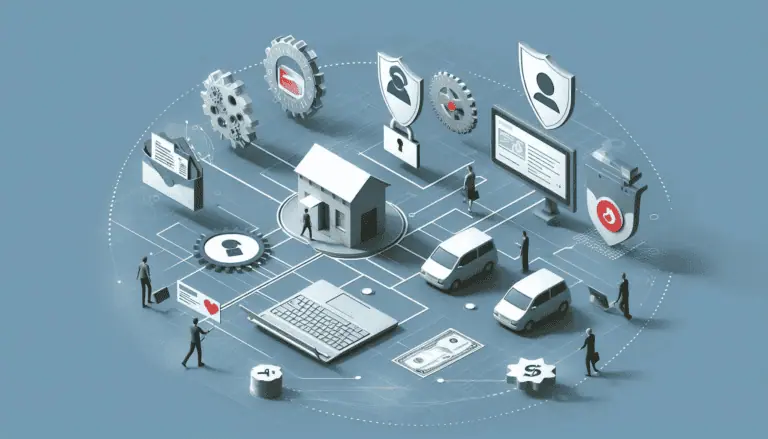Healthcare Analytics: Transforming Patient Care and Beyond

Written By:
Last Updated Date:
TL;DR
“Healthcare Analytics: Transforming Patient Care and Beyond” underlines how HopeMed Hospital uses healthcare analytics to revolutionize patient care. By adopting predictive analytics and AI-powered diagnostics, the hospital delivers actionable insights to improve patient care and operational efficiency, enhancing patient outcomes and reducing costs.
Overcoming challenges like data privacy and integration, HopeMed sets new standards in care, showcasing the profound potential of healthcare analytics to drive efficiency, personalize treatment, and shape the future of medicine. This transformation illustrates how data-driven strategies can significantly improve healthcare delivery and patient well-being.
Key Takeaways
- Improved Patient Outcomes: HopeMed Hospital uses predictive analytics and AI-powered diagnostics to enhance patient care, resulting in significantly better health outcomes.
- Operational Efficiency: HopeMed increased efficiency, reduced costs, and optimized resource management despite data privacy and integration challenges.
- Future Potential: The successful implementation at HopeMed showcases the transformative power of healthcare analytics, paving the way for personalized treatment and innovative public health strategies.
The Story of HopeMed: A Journey of Transformation

Imagine HopeMed, a bustling city hospital, where Dr. Emily Johnson, a dedicated physician, faces the daily challenge of sifting through mountains of patient data. One winter morning, she meets Mr. James, a 65-year-old with chronic heart disease. His symptoms are severe, and Emily feels the weight of her responsibility.
Despite her outstanding efforts, Emily knows there must be a better way to predict and prevent complications. The hospital administration, grappling with inefficiencies and rising costs, embraces healthcare analytics, hoping to transform its operations and patient care.
The Transformation Begins
Within months, predictive analytics tools become part of HopeMed’s routine, enhancing the analytical skills of the staff in using real-time data from Mr. James’s wearable device to adjust his treatment plan proactively. His health improves significantly, and the hospital’s operational efficiency soars.
By analyzing patterns in patient admissions and resource use, HopeMed optimizes staffing and inventory, reducing costs and ensuring preparedness.
AI-powered diagnostics enhance accuracy and speed. Emily recalls a case where AI-assisted imaging detected a rare condition early, saving a life and cementing HopeMed’s reputation for excellence.
Overcoming Challenges

The journey isn’t without challenges. Data privacy and security are critical concerns, but patient information remains protected with robust measures.
Data warehousing plays a crucial role in integrating disparate data and eliminating redundant data, which decreases report-building time and increases cost savings. Standardizing diverse data sources is another hurdle, but the right technology helps integrate datasets seamlessly.
A Glimpse into the Future
Emily feels optimistic about the future. Healthcare analytics has transformed not just her practice but the entire hospital. It paves the way for personalized medicine and data-driven public health strategies, managing outbreaks and chronic diseases more effectively.
HopeMed’s story shows the transformative power of healthcare analytics. It drives efficiency, improves patient outcomes, and opens new career opportunities in healthcare. As we explore further, we’ll uncover how this field revolutionizes patient care and beyond, one data point at a time.
What is Healthcare Analytics?

Healthcare analytics is revolutionizing the way we approach patient care and hospital management. By integrating data science, professionals can complement their background knowledge in biology and math to optimize hospital efficiency and improve healthcare outcomes.
Healthcare analytics involves using data from various sources like electronic health records (EHRs), clinical data, insurance claims, and wearable devices to make informed decisions.
By employing health data analytics, healthcare providers can analyze data using quantitative and qualitative techniques to explore trends and patterns, significantly enhancing patient care.
Moreover, data visualization is crucial in providing real-time information and delivering actionable insights, aiding in analyzing the healthcare industry’s financial, administrative, clinical, and patient behavior data.
These techniques help transform data into accurate, consistent, and timely information, crucial for making informed decisions in the healthcare industry.
Recent developments in healthcare analytics show its growing potential to improve decision-making and preventative care through technologies like big data and AI. Different methodologies are being explored to develop effective healthcare analytics solutions, focusing on areas that need more robust design practices.
AI Solutions in Healthcare

Telemedicine
AI is revolutionizing healthcare by advancing remote consultations and virtual health assistants, delivering significant benefits in telemedicine. Remote consultations enable patients to consult with doctors from their homes, which is particularly advantageous for those in remote or underserved areas.
This ensures timely care without the need for physical visits. AI-driven virtual health assistants manage patient queries and schedule appointments, using patient data to provide accurate information and timely reminders, thus improving patient engagement and satisfaction.
Artificial Intelligence in Healthcare expands on this by explaining how AI uses machine learning to sense, reason, act, and adapt based on experience. AI primarily aims to solve complex healthcare challenges by accurately and rapidly interpreting data.
This capability aids in the early detection of chronic diseases like Alzheimer’s, diabetes, and various cancers, reducing both the financial burden and the severity of these diseases. AI is applied in disease detection and treatment, patient connection and engagement, and managerial and security activities.
Diagnostics
AI is making a massive impact in healthcare diagnostics, mainly through predictive analytics and imaging analysis. Predictive analytics uses historical and real-time data to predict potential health issues before they become serious.
This allows healthcare providers to take preventive measures, improving patient outcomes significantly. AI-powered imaging tools also enhance diagnostic accuracy by analyzing medical images with high precision, helping radiologists spot abnormalities that the human eye might miss.
Operational Efficiency
Operational efficiency is vital in healthcare to ensure resources are used effectively. Hospitals can optimize staffing and inventory by predicting patient admissions and the necessary resources, ensuring they are well-prepared without overstaffing.
This results in significant cost savings and improved patient care. Additionally, analytics can identify fraud patterns in insurance claims, saving millions of dollars. This reduces costs and ensures that resources are directed where they are most needed.
Overview of Operations in Health Informatics highlights the importance of efficient processes in healthcare systems, especially during crises. Health systems must treat patients, support treatments, and ensure that health information is shared appropriately across the system.
In times of crisis, these systems face increased stress and require a strategic plan to efficiently manage health data and resources. This involves focusing on operations strategy, viewing health services as products, prioritizing staff planning, and executing effective business continuity plans.
Population Health Management
Healthcare analytics transforms population health management by designing effective public health strategies and improving chronic disease management. By analyzing large-scale data, healthcare professionals can manage outbreaks, increase vaccination rates, and create health interventions tailored to specific populations.
For chronic diseases, analytics help identify trends and outcomes across different patient groups, leading to better-targeted treatment plans and improved long-term patient health.
Data analytics enhances healthcare at multiple levels. It has improved patient care, enabled faster and more accurate diagnoses, and facilitated preventive measures and personalized treatments. The COVID-19 pandemic also highlighted the need to expand data analytics beyond traditional sources like Electronic Health Records (EHRs).
Data analytics now play a crucial role in improving patient outcomes, enhancing care management, and addressing social determinants of health. As population health analytics grows, healthcare systems must integrate data from various sources, use different analytics, and generate actionable insights.
Quality Improvement
Healthcare analytics plays a vital role in improving the quality of care through tools like Clinical Decision Support Systems (CDSS) and outcome measurement. CDSS uses real-time data to help doctors make better decisions, reducing the chances of errors.
This means doctors get the support they need right when they need it. Outcome measurement allows for constant monitoring and evaluation of how treatments work, helping implement evidence-based practices and improve overall care quality.
Data analytics can help improve patient outcomes, manage care better, and address social health determinants. As population health analytics grows, healthcare systems must gather data from many sources, apply various analytical methods, and provide actionable insights.
Issues While Adopting AI in Clinics

Small and medium-sized businesses (SMBs) in the clinical sector face several hurdles when adopting AI technologies. Despite AI’s potential to enhance health outcomes, reduce costs, and improve patient experiences, these challenges can significantly slow its adoption.
Knowledge Gaps in Procurement Protocols
Many SMBs don’t understand the complex procurement processes needed to integrate AI into clinical workflows. This lack of knowledge can make navigating the necessary steps to adopt new technologies difficult.
Regulatory and Validation Requirements
The healthcare sector is heavily regulated, and ensuring compliance with these standards is time-consuming and resource-intensive. Meeting these stringent requirements can be a significant obstacle for smaller companies with limited resources.
Technology Procurement Challenges
Getting new technology approved within health systems is often lengthy and complicated. You must deal with complex negotiations and compete against larger, more established companies with more resources and relationships within the healthcare sector.
Competitive Disadvantages
Larger technology firms have significant advantages over SMBs, including more resources, a more substantial market presence, and better access to decision-makers in healthcare organizations. This makes it challenging for SMBs to gain traction and adopt AI solutions.
The Participatory Workshop on the Gap Between AI and Bedside highlighted the unique challenges of early-stage digital health and AI entrepreneurs. Participants in the workshop noted that healthcare systems often struggle to keep up with the rapid advancements in AI and digital medicine.
Regulatory and validation requirements were identified as significant barriers. Traditional methods, like randomized controlled trials, are often unsuitable for evaluating digital health innovations, indicating a need for alternative validation approaches.
Overcoming Challenges of Healthcare Analytics

Integrating healthcare analytics offers tremendous benefits, but it comes with its own set of challenges. Ensuring data privacy and security is a top priority, as patient information must be protected throughout the analysis process.
Additionally, integrating complex and diverse data types and requiring standardized data formats pose significant obstacles. Healthcare organizations can improve decision-making, operational efficiency, and performance by adopting a conceptual framework for big data analytics.
Tips on AI Adoption Process in Clinics

Small and medium-sized businesses (SMBs) in the clinical sector face numerous challenges when integrating AI technologies. However, focusing on crucial strategies can overcome these barriers and streamline the AI adoption process.
Educate and Train Staff
Educating and training staff is crucial for successfully adopting AI in clinics. Organizing regular workshops and seminars can help staff understand AI technologies and their benefits. These sessions provide hands-on experience and practical knowledge that can ease the transition to AI-powered workflows.
Additionally, online courses and certification programs offer a flexible way for staff to gain expertise in AI applications in healthcare. By ensuring that everyone is well-informed and comfortable with AI, clinics can facilitate smoother integration and better utilization of these advanced tools.
Simplify Regulatory Compliance
Navigating the complex landscape of healthcare regulations can be daunting, especially for SMBs. Engaging with regulatory experts can help streamline this process. These experts can provide valuable guidance and support, assisting SMBs to understand and meet regulatory requirements more efficiently.
Developing clear and comprehensive documentation for AI solutions is also essential. This documentation should detail how the AI technology complies with regulations, making it easier for regulatory bodies to review and approve.
Simplifying regulatory compliance accelerates the adoption process and ensures that AI solutions are implemented correctly and safely.
Optimize Procurement Processes
The procurement process for AI technologies can be complicated and time-consuming. SMBs can benefit from establishing a dedicated team to handle AI procurement. This team can streamline decision-making, ensuring that procurement processes are efficient and effective.
Implementing pilot programs is another helpful strategy. By testing AI solutions in a controlled environment before full-scale deployment, SMBs can identify potential issues and make necessary adjustments.
Pilot programs provide valuable insights and feedback, helping to refine AI implementations and increase the chances of success.
Foster Strategic Partnerships
Forming strategic partnerships with larger technology companies and healthcare institutions can provide SMBs with the resources and expertise they need to adopt AI. These partnerships can offer access to advanced technologies, support, and guidance that may be unavailable.
Joining industry networks and consortiums is also beneficial. These networks inform SMBs about best practices and emerging trends in AI adoption, facilitating knowledge sharing and collaboration. Strategic partnerships and industry involvement can significantly enhance SMBs’ ability to implement AI effectively.
Leverage Funding Opportunities
Securing funding is often a significant challenge for SMBs looking to adopt AI. Applying for government grants and subsidies can provide much-needed financial support. Many governments offer funding for healthcare innovation and technology adoption, which can help offset the costs of implementing AI.
Additionally, seeking venture capital focused on healthcare technology startups can provide funding and valuable business support. Leveraging these funding opportunities can make AI adoption more feasible for you, enabling them to invest in advanced technologies and drive innovation.
Improve Communication and Transparency
Clear communication is vital to successful AI adoption. Establishing robust communication channels within the organization ensures that all stakeholders are informed about the progress and benefits of AI initiatives.
Regularly engaging with stakeholders, including clinicians and patients, helps gather feedback and address any concerns related to AI integration. Transparent communication builds trust and fosters a collaborative environment, making implementing and optimizing AI solutions easier.
Focus on Data Management
Effective data management is critical for the successful integration of AI technologies. Standardizing data formats and ensuring system interoperability facilitate seamless integration and more accurate analytics. Implementing robust data privacy and security measures is also essential.
Protecting patient data builds trust and ensures compliance with regulations. By focusing on data management, you can overcome significant barriers and enhance the effectiveness of their AI solutions.
Utilize Implementation Frameworks
Adopting established best practices and frameworks for AI implementation in healthcare can guide you through the process. Professional organizations and industry standards provide valuable resources and guidelines that can help ensure successful AI integration.
Continuous improvement is also essential. Regularly reviewing and updating AI implementation processes based on new advancements and user feedback ensures that AI solutions remain practical and relevant. Utilizing implementation frameworks helps you adopt AI in a structured and effective manner.
The Future of Healthcare Analytics

The future of healthcare analytics is auspicious, with emerging trends like personalized medicine and population health management poised to transform the healthcare landscape. Imagine a healthcare system where treatments are tailored specifically to an individual’s genetic makeup or where public health strategies are crafted based on comprehensive data analysis.
This is the direction we’re heading. Healthcare analytics is revolutionizing the industry by improving decision-making processes and enhancing preventative treatments and diagnostics. By harnessing the power of big data, predictive analytics, and prescriptive analytics, healthcare providers can generate precise and informed predictions. This allows them to turn complex and fragmented data into actionable insights.
Advanced technologies and frameworks for big data analytics are helping healthcare organizations become more efficient and effective. These advancements not only improve operational performance but also pave the way for cutting-edge trends in AI and Natural Language Processing (NLP) to be integrated into patient care and diagnostic medicine.
This integration has the potential to greatly enhance the accuracy and personalization of treatments, making healthcare more responsive and tailored to individual needs.
Overall, the future of healthcare analytics is set to redefine how we understand and manage health, leading to better outcomes, more efficient operations, and a more personalized approach to patient care.
Conclusion
HopeMed’s journey demonstrates the transformative power of healthcare analytics in improving patient outcomes and operational efficiency. The hospital has set new patient care and resource management standards by leveraging predictive analytics and AI-powered diagnostics.
These advancements highlight the immense potential of healthcare analytics to revolutionize the medical field, paving the way for personalized treatments and innovative public health strategies.
As healthcare continues to evolve, other businesses must follow HopeMed’s example. Investing in healthcare analytics tools can drive efficiency, reduce costs, and ultimately enhance patient care.
Embrace the future of healthcare today by integrating advanced analytics solutions into your operations. The time to act is now. Transform your healthcare delivery and join the revolution towards a more efficient and effective healthcare system.
Frequently Asked Questions (FAQ)
I’m a Data Enthusiast and Content Writer with a passion for helping people improve their lives through data analysis. I’m a self taught programmer and has a strong interest in artificial intelligence and natural language processing. I’m always learning and looking for new ways to use data to solve problems and improve businesses.






